This is Thersa Matsuura and you’re listening to Uncanny Japan.
Setting Scene
Today let’s go back again to the Edo Era. It was the Golden Age of Yokai, they say. You are on your way home from chopping some firewood, when you notice a shift in the atmosphere, the temperature drops and the air and feels charged with electricity. A little farther on, and dark clouds gather overhead. The wind picks up. Thunder. You can tell this is going to be an intense storm and are a little angry at yourself for not starting back earlier.
You know it’s dangerous to be outside during this kind of weather, but you’re still quite a way from home and there’s nowhere to take shelter nearby. Standing under a tree, out in the open, or near any body of water is especially dangerous. You know that much. You’re not dumb. But on the other hand, it is the 1700s so you are also absolutely positive that up there, above that ominous cloud bank, Raijin, the red-skinned, well-built god of lightning and storms; and Fūjin, the blue-skinned, ripped god of wind, are hurling lightning bolts around, squeezing great gales from a wind bag, and banging on taiko drums. They’re dangerous, too. But there’s one little beastie you forgot all about. The one that actually drops down to earth and wreaks havoc.
You stop to catch your breath when suddenly a bolt of lightning crackles and explodes a tree not too far from where you’re standing. You drop to your knees, invisible needles prickle your skin and you are momentarily blinded. Yet, as you blink your vision back, you can’t help but think that you saw something. Some sort of creature riding that flash of lightning down to earth.
And you’re right. You did. You saw a raijū.
Intro
Meaning of Raijū 雷獣
The raijū. Simply, it’s name means thunder beast or thunder animal. And while during the Edo Era everyone knew about this little buddy. It has in recent times lost favor or importance, perhaps. We like to think we know what exists up there in the sky. And sadly, it’s not the raijū anymore.
What Does it Look Like?
I don’t think I’m going out on a limb here when I say this thunder beast is probably the most wild and confusing-looking beast in the whole yōkai pantheon. Where to even start?
Here are a few of the descriptions that have been passed down through the ages. Keep in mind, that its entire body is made up of lightning, so whatever form it takes, it’s sparking and fizzing and most likely glowing, imagine this:
You’ll often see the raijū drawn or painted as a blue-white wolf, fierce and majestic. Although sometimes that wolf or dog-like animal can have two front legs and four rear legs, and a forked tail, too. But then it can also look like, here we go, a puppy, a tanuki a weasel, a cat, a flying squirrel, or a palm civet (called a hakubishin), and then rarely the totally out there descriptions saying it resembles some sea mammal, fish or bug. There are some old images though and a mummy or two that have been left for us to ponder.
The most iconic raijū picture is that of a creature, when viewed from above, that has long fur or hair all down its back, somewhat scaly legs, with two very long inward curving claws on each of its feet. The mummies on the other hand can look exactly like a cat, or not exactly a cat, like a cat with legs that are too long and no eye sockets in its head. Some are really weird and just might have been created to show in a misemono, remember the freak shows they used to have.
What Does it Do?
During a thunderstorm the raijū could be seen riding on top of clouds or down on a bolt of lightning. Basically, they get riled up and start darting about, sometimes jumping from tree to tree, sometimes bouncing off a house or around fields. Slightly related, did you know that there were two ways of thinking about lightning hitting your field. One was that it was a raijū and immediately bamboo poles with shimenawa ropes needed to be put up to prevent it from coming back and destroying all your crops. The other can be summed up in an old saying: Kaminari ga oi to hōsaku ni naru (雷が多いと豊作になる). Frequent thunderstorms lead to abundant harvests. And there seem to be some scientists saying this is true.
You know trees that have been struck by lighting and splintered, having all that wood torn away, right? Well, that was thought to be the result of a raijū’s long claws.
Back in the day those who lived near Tsukuba in the Shimotsuke Province had an raijū that would — when a storm was afoot — rush around with ferocious force, destroying their crops, lighting things on fire. The people, though, were a tough lot and would do something called Kaminari gari, which means Thunder Hunting.
There’s an old wives tale that if you are near the place where a raijū lands you’ll lose your mind. But don’t worry. You just need to eat some corn and you’ll get better.
Remember Raijin? The Lightning and Storm god? Well, raijū isn’t very big, probably about the size of a house cat or perhaps a big one a meter or so in length. So it makes a perfect companion or pet, as the case may be, for Raijin. Which is so cute to think about. But here’s the thing, raijū also have the habit of curling up in a person’s belly button and taking a nap. Yeah, I know.
There’s an superstition in Japan that when you hear thunder you should cover up your belly button. Children, that is. You don’t usually see adult going around doing this. But they do remind children who might forget.
I’ve always heard that it was because Rajin, himself, will come down and eat your navel if you don’t hide it. Just recently, though, I read that, actually, some believe it’s because raijū snuggles into your belly button and falls asleep, and then Raijin wanting to call him home throws down a lightning bolt or two to wake him up. While that’s nothing for a beast made up of lightning, it’s quite dangerous for human. An ounce of prevention, keep raijū away from your belly.
Story About Raijū
Here let me tell you my absolute favorite 100% true story about raijū.
Once upon a time there lived a great samurai named Tachibana Dōsetsu (1513-1585). He owned a sword called Chidori (千鳥) or “One Thousand Birds”. When he was 35-years old, he was out and decided to rest under a tree to cool off. A great storm rolled in and suddenly a crackle of lightning came right at him. It would have hit him, too, except the famed samurai withdrew Chidori and sliced through the thunderbolt, saving his life. Also, it left a dead and smoldering raijū on the ground at his feet. He changed his sword’s name from One Thousand Birds to Raikiri, Thunder Cutter.
Unfortunately, his speedy response saved his life, but didn’t leave him unharmed. His left leg was paralyzed after that. Didn’t stop this great warrior though. He went on to fight another 37 battles.
An FYI, the raijū you encountered on your way home at the beginning of the story is one that comes down during a thunderstorm. There is a whole other line of thought that thinks they live down here, in mountains, trees, animals, and remain calm on fine days, only to get riled up and go mad when a storm sweeps in.
In Tochigi Prefecture, in the summer months, they say you could find raijū in the mountains, sticking their heads out of holes in the ground waiting for a peal of thunder that they could leap on and get on top of a suitable cloud.
On a related note, there’s also a creature called rairyū ( 雷竜 ), or thunder dragon, and that’s just adorable. It’s got a furry chest, scaled back, arms and snake-like tail, and has those long sloth-like claws still. Although you’ll also find it just looking like a really cool dragon emanating electricity.
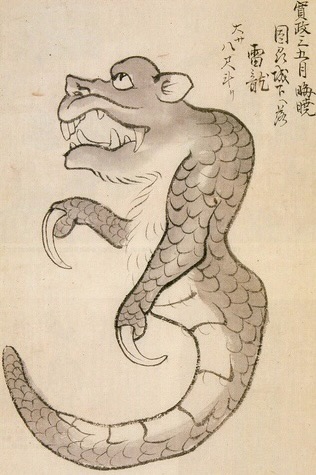
So to sum up, sometimes a raijū lives quietly in mountains until a storm brews, then they get all frantic and leap up into the clouds where they start their zoomies. Or the opposite, sometimes they were already on the clouds and fell from the sky in a ball of lightning.
And sometimes when a thunderstorm got really bad, raijū just fell from a tree (thump). Dead. Or not dead. Just startled. But sometimes dead. This is where modern day people go, oh that wasn’t a thunder beast, it was some animal the people of Edo weren’t used to. This could have been that palm civet I mentioned earlier. It was thought they entered Japan much much later, but some sources say, no, they were probably here, just no one knew what they were and they hadn’t been named yet. They lived in forests and in trees. So perhaps during a storm the got frightened and fell. Or maybe the tree was hit and one got fried and fell. Either way it was very strange to the people back then.
There is a story from Akita Prefecture of someone catching one, boiling it and eating it. A kinder man, caught one and raised it. He said it quite liked corn. Corn again.
Okay, I’ll stop for today.
Thank you for listening. The bulk of the book is done, edits coming up, of course, but I can see the shape of if and that’s exciting. If you’d like to check it out it’s called The Book of Japanese Folklore by Thersa Matsuura. You can pre order it most places. Ordering it from your local or indie bookstore would be nice, too.
I’ll talk to you in two weeks!

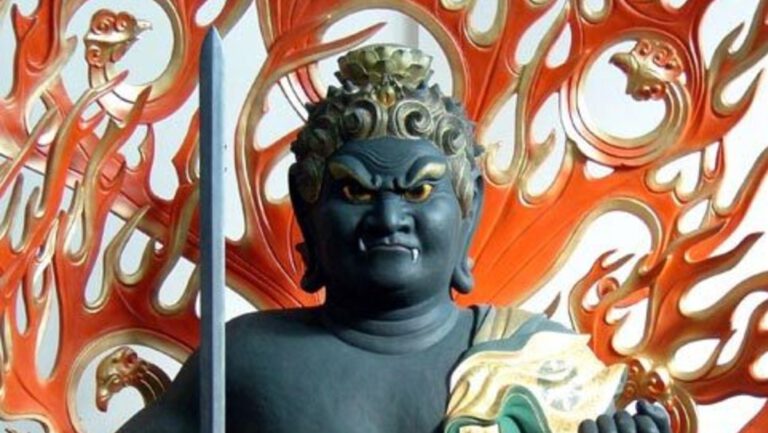
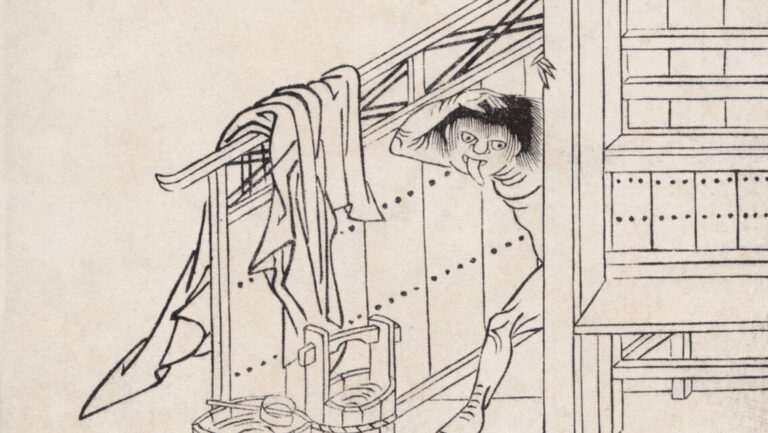
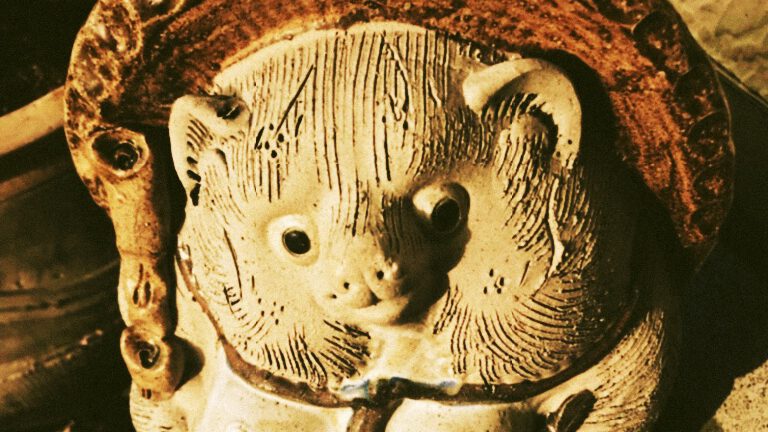
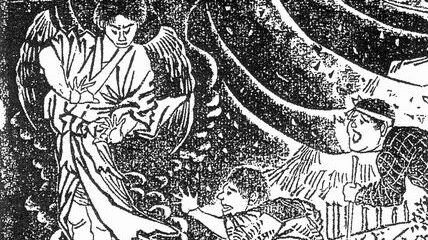


The insectoid look of the picture above reminds me of the electric-type Pokemon Joltik.
Absolutely! I meant to mention the Pokémon that were based on the little fellow. Thank you for mentioning it🙏.